She Explores Podcast: Reflecting on 2019

Reflecting on 2019
She Explores Podcast
By Host Gale Straub
At the start of 2019, I compiled feedback from you, the listeners, and dreamed up what the year might sound like. It was the fourth year of this podcast, and an opportunity to really dig in on topics you care about like conservation, advocacy, and what it means to be an empowered woman outside. When we’re creating this show, we’re always thinking about you. What you might want to listen to, how we might challenge your beliefs, and what you want to learn about in the outdoor community. Most of all, we want to inspire you to take chances, to push yourself in the outdoors and otherwise.
We’ve been taking chances since we started the show: there’s no set format, length, or number of women featured to tell a given story. In 2016, we worked with Liz Song to create a two-part series on diversity in the outdoors, consulting subject matter experts and including real experiences from women of a range of backgrounds. In 2017, we dove more “into the field,” recording interviews at a Women’s Empowerment Summit in the Presidio of San Francisco and taking my twin sister backpacking for the first time. In 2018, we solicited voice memos from women over 50 to seek out their wisdom. We also collaborated with would-be podcasters to pass the mic to tell more dynamic first-person stories.
When I looked ahead to 2019, I knew I wanted to continue sharing the voices of women that would inspire more women to step outside. She Explores could be summed up in a few phrases:
Our curious, open natures take us to beautiful places.
There’s no one way to step outside.
Your outdoor story is entirely your own, and still – you’re not alone.
Looking ahead this year meant looking back: what have we covered already? What is worth revisiting? Where is there room for more depth? With your feedback, we set out to tell more conservation stories, more “how-to” episodes, and more collaboration episodes. It was fun to continue to tap into different sides of what it means to be an outdoorswoman. Because the sky’s the limit with this show, just as there are infinite ways to experience and care for the natural world.
Reflecting on the 46 new episodes of 2019, it is impossible to choose favorites. But I am pleased to share those episodes that have stuck with you, as well as those that feel like growth points for our show. You’ll find recaps below, as well as an extended 2019 playlist that I curated on Spotify.
I’m confident that if you listen you’ll be in good company. Looking ahead to 2020, and thinking of all of you – I know I am.
– Gale Straub, Host of She Explores
Listener Favorites
Two States to Go on the Appalachian Trail: Grizel Williams
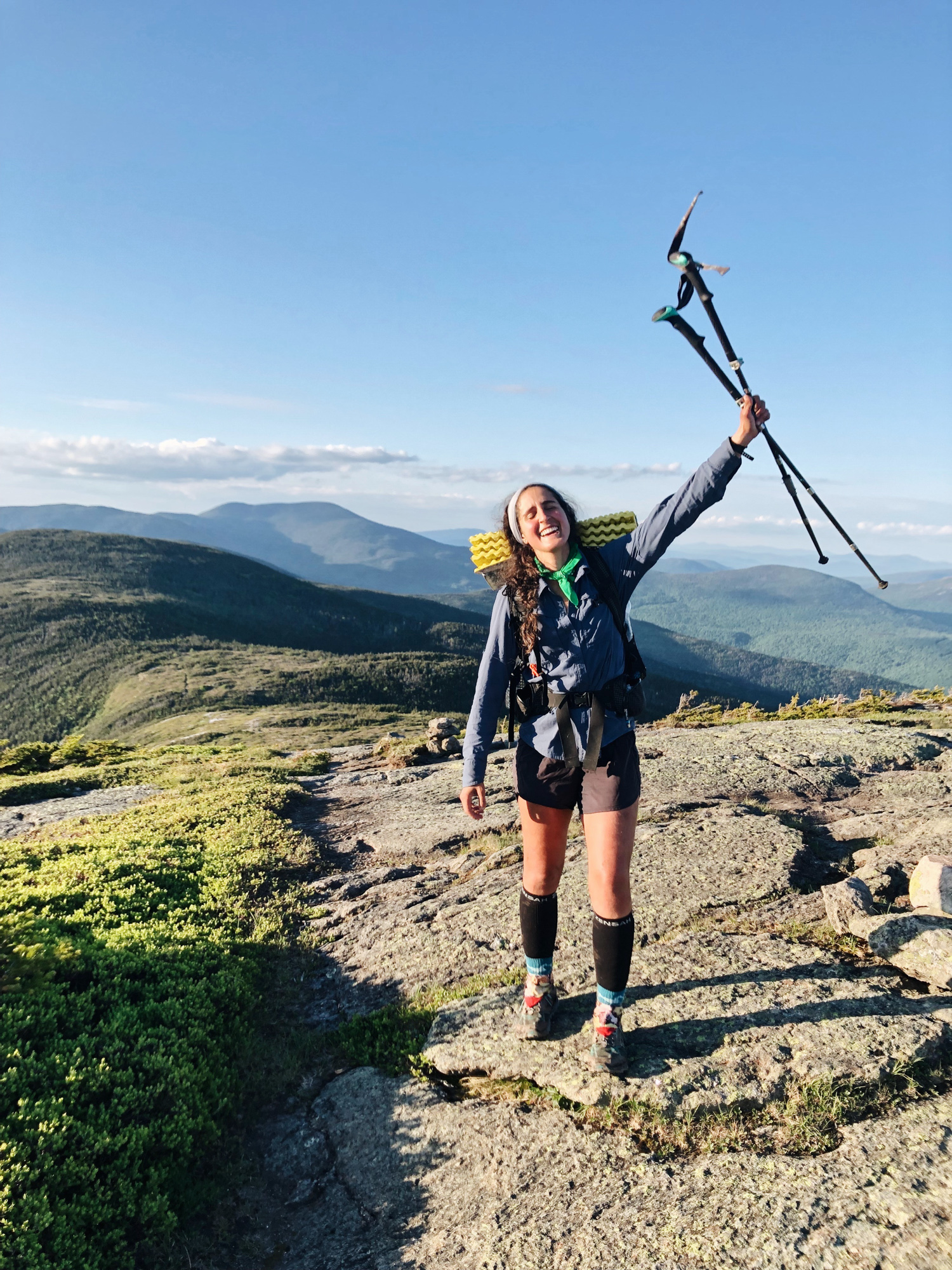
Grizel on the Appalachian Trail in New Hampshire
I got to interview Grizel Williams right after she stepped foot in the state of New Hampshire. I remember how salient it felt to be driving the 100 or so miles to do the interview when she’d just traveled hundreds of miles by foot.
Grizel had two states to go on the Appalachian Trail (AT), her second thru-hike in two years. Emotions were high as she contemplated the next two weeks on trail. There’s a rhythm to thru-hiking, and it can be tough to break.
With her trademark openness and warmth, Grizel shared her real experiences on the AT. We talked about sexism, racism, periods, and body image. We ate cookies. And both you, the listeners, and I, got a dose of the magic of the trail and Grizel in equal measure.
Learn more about Grizel on the episode landing page ->
Safer Alone in the Backcountry: Sarah Grothjan
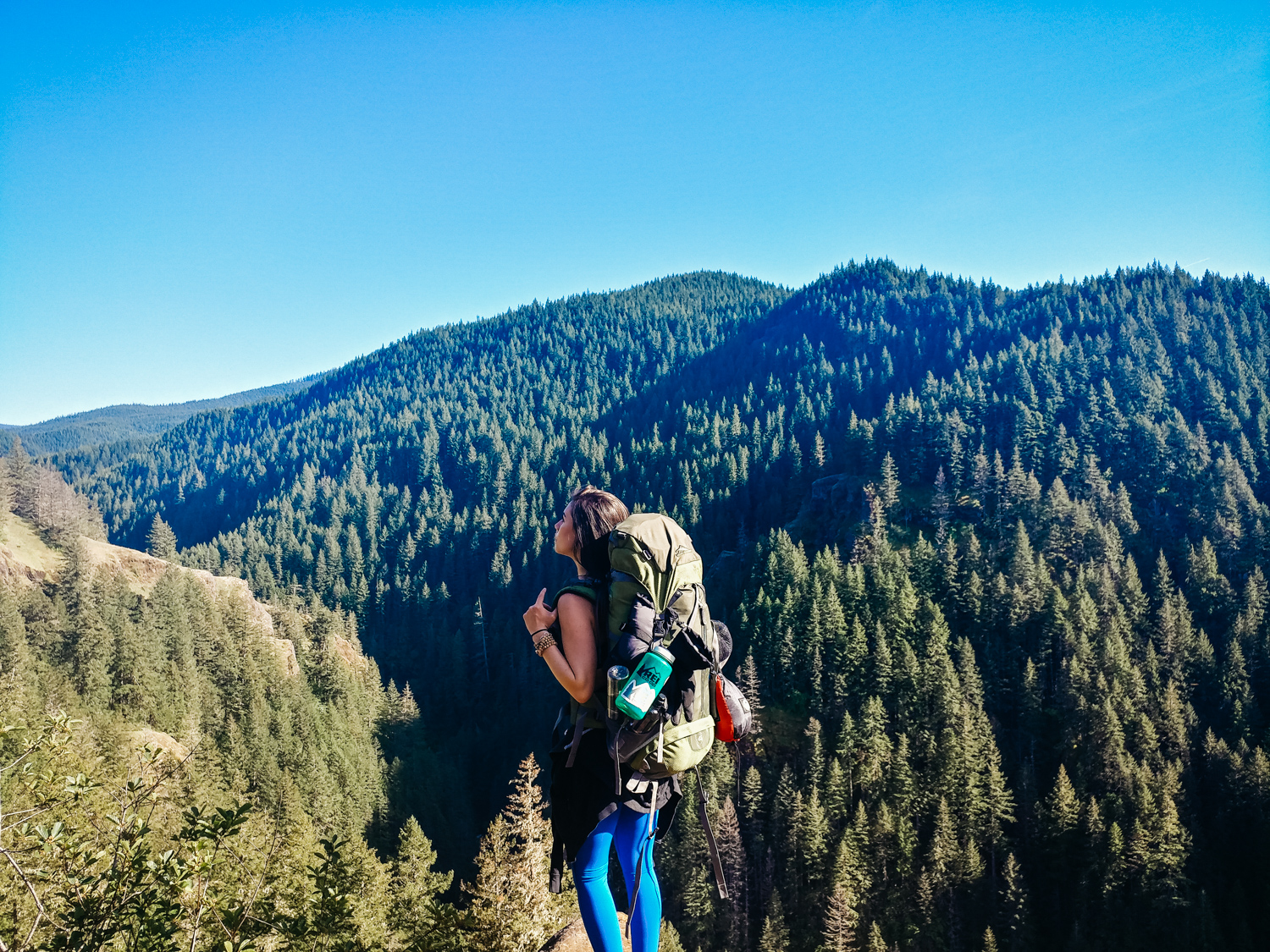
Sarah, alone in the backcountry
Sarah Grothjan reached out to me with an observation that would surprise all naysayers, all people who think women should be afraid to go deep into the outdoors on their own. Sarah told me, “I feel safer alone in the backcountry than I do in the city where I live.” It’s a visceral statement, one that resonated with countless women who heard Sarah recount her story on the podcast.
I think it’s important to tell different sides of the solo outdoor narrative. Because if women don’t tell their stories, then others fill in the blanks for us. And that keeps us from going out and having growth experiences outdoors. For some, that growth is accelerated through getting out there alone.
Sarah is a journalist with a necessary voice for outdoor women. I hope you enjoy hearing her story, as well as digging into her archive.
Learn more about Sarah on the episode landing page ->
A Challenge from the Universe: Sharlene Jones
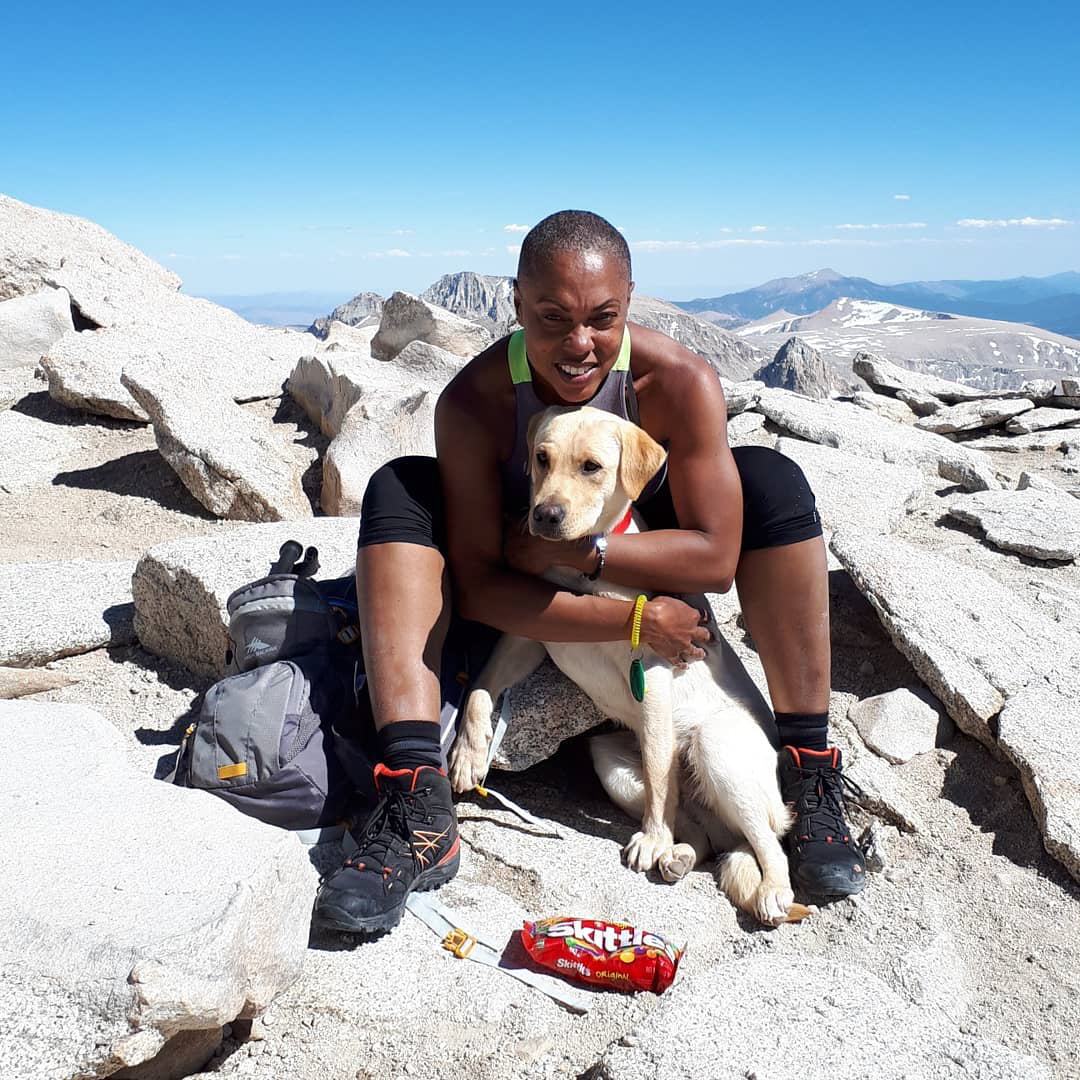
Sharlene & her medical assist dog Titan on Mount Whitney
Teresa Baker, the speaker and advocate behind African American Nature & Parks Experience, reached out to me with Sharlene’s story: a determined athlete who became allergic to exercise.
I talked to Sharlene on the phone before she set out to hike Mount Whitney, the highest mountain in the continental United States. She had it all planned out: she’d pick up her medical assist dog Titan in Colorado and try hiking a 14er. If it went well, she’d meet up with her friends in California to hike Whitney.
But in our interview after her successful summit, she let me in on the truth: she was probably going to do it regardless of how the first hike went. Not because she’s reckless, but because she’s learned how to manage her chronic condition. Sharlene understands that risk is relative. Plus, who was she to turn down a challenge from the universe?
Learn more about Sharlene on the episode landing page ->
Curvy Kili Crew
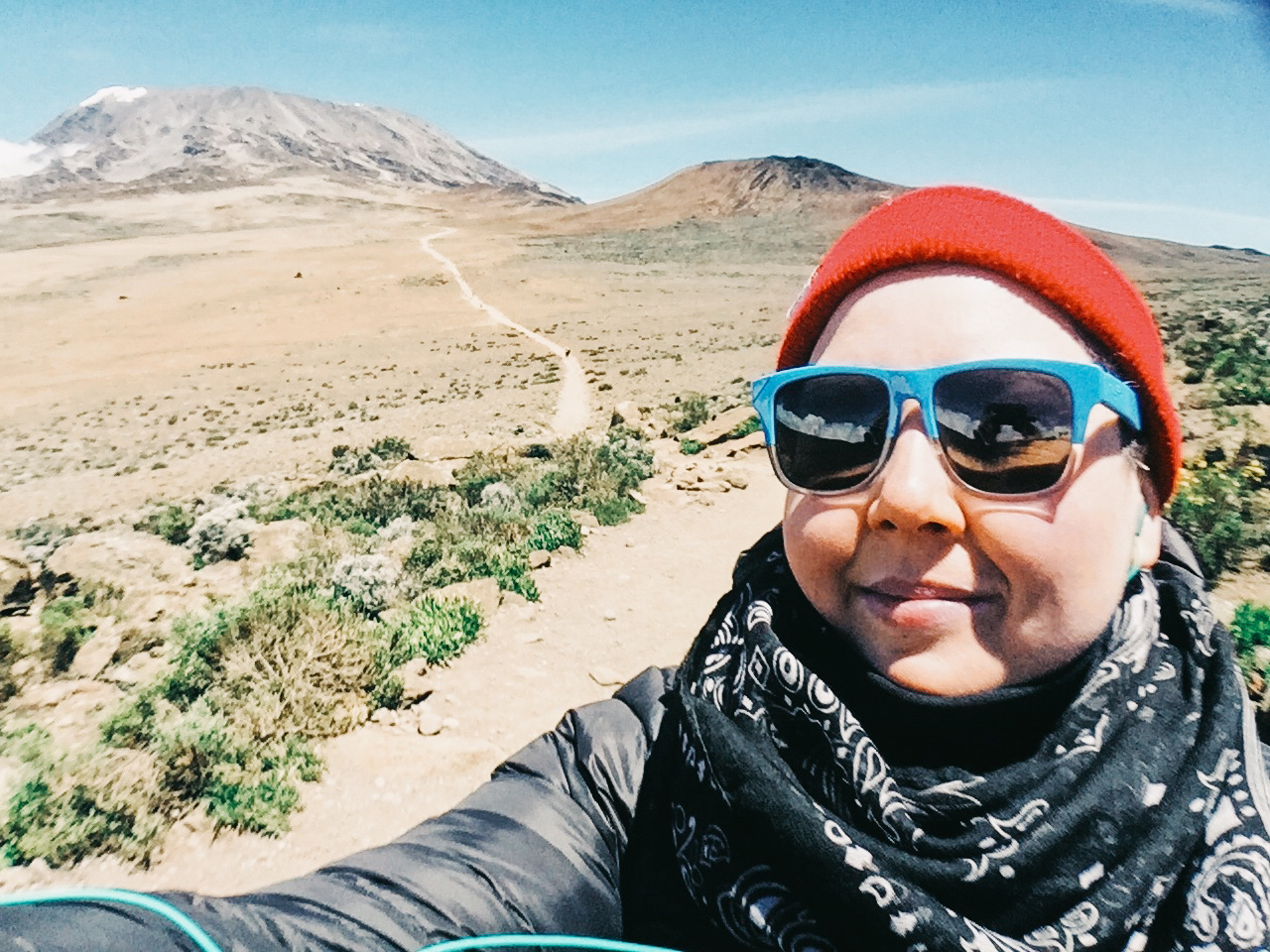
Selfie on the trail – Diandra Oliver
Diandra Oliver submitted a voice memo for the last episode of 2018, a compilation episode called “Looking Forward in our Outdoor Lives.” She said that she looked forward to climbing Mount Kilimanjaro with 20 plus-size women. I was excited for her and hopeful that she might want to share the story with us.
I got the opportunity to talk with Diandra before and after the trip. She was generous enough to take a recorder with her to Tanzania, where she recorded the sound of the mountain and the first-person experiences of her crewmates.
I love this episode for two reasons. First, it’s a beautiful expression of what’s possible when people with a shared experience come together to take on a challenge. Second, it redefines what it means to “summit” a mountain.
Learn more about the Curvy Kili Crew on the episode landing page ->
Follow the Curvy Kili Crew on Instagram
Work & Play: Weekend Adventurer Holly Johnson
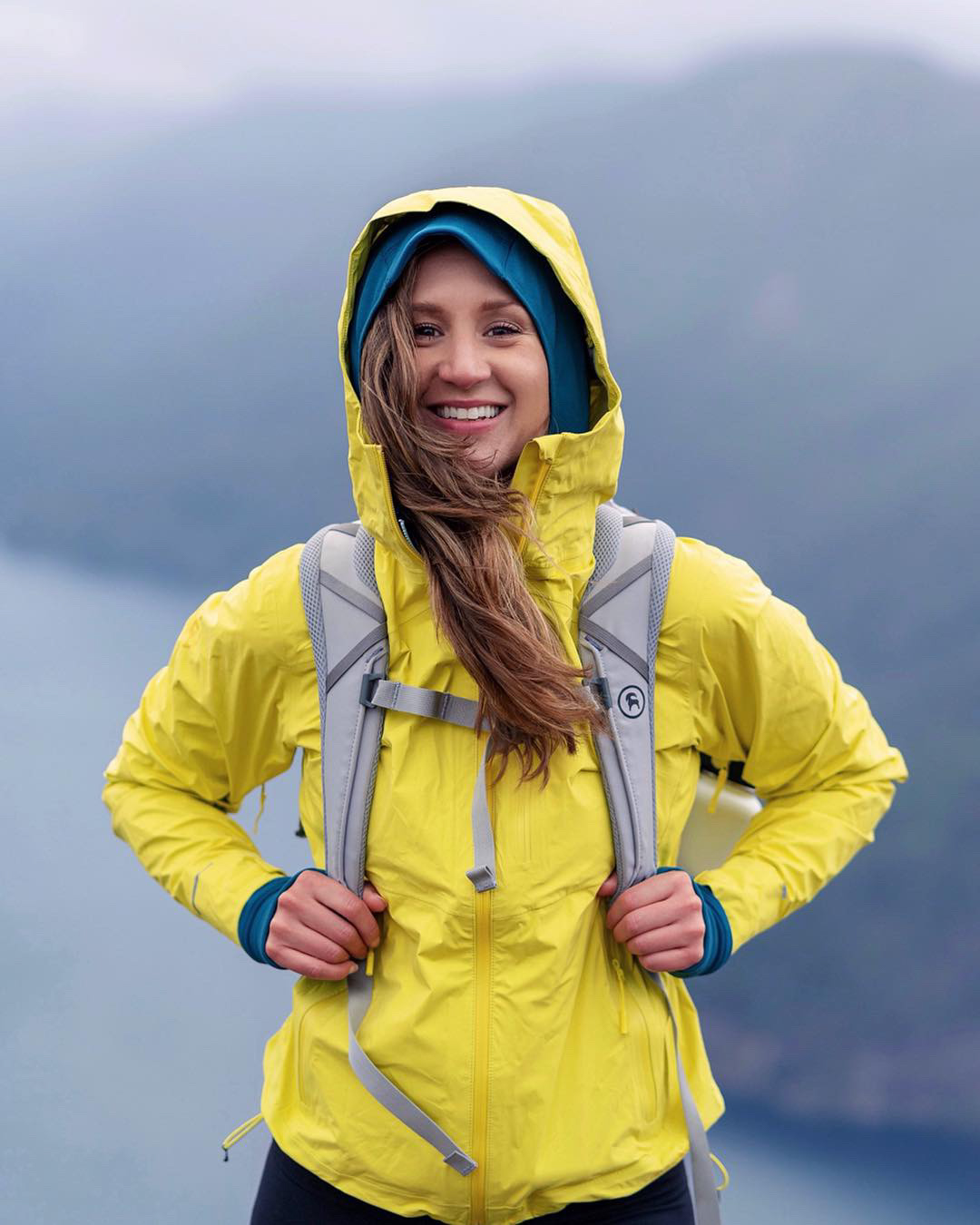
Holly in her element
Holly Johnson works a full-time 9 to 5 job as an executive assistant in Seattle and devotes many of her weekends and vacations to hiking.
I appreciated Holly’s openness throughout our conversation – which shows up in her online presence as well. As an Instagrammer with over 300,000 followers, she highlights her hiking life but also makes sure to include life off-trail, too. Holly does this because it can be misleading to see just one dimension of a person and she wants to encourage other 9 to 5’ers to embrace the positive aspects of that lifestyle, too.
Learn more about the Holly on the episode landing page ->
To be Seen: Nikki Smith
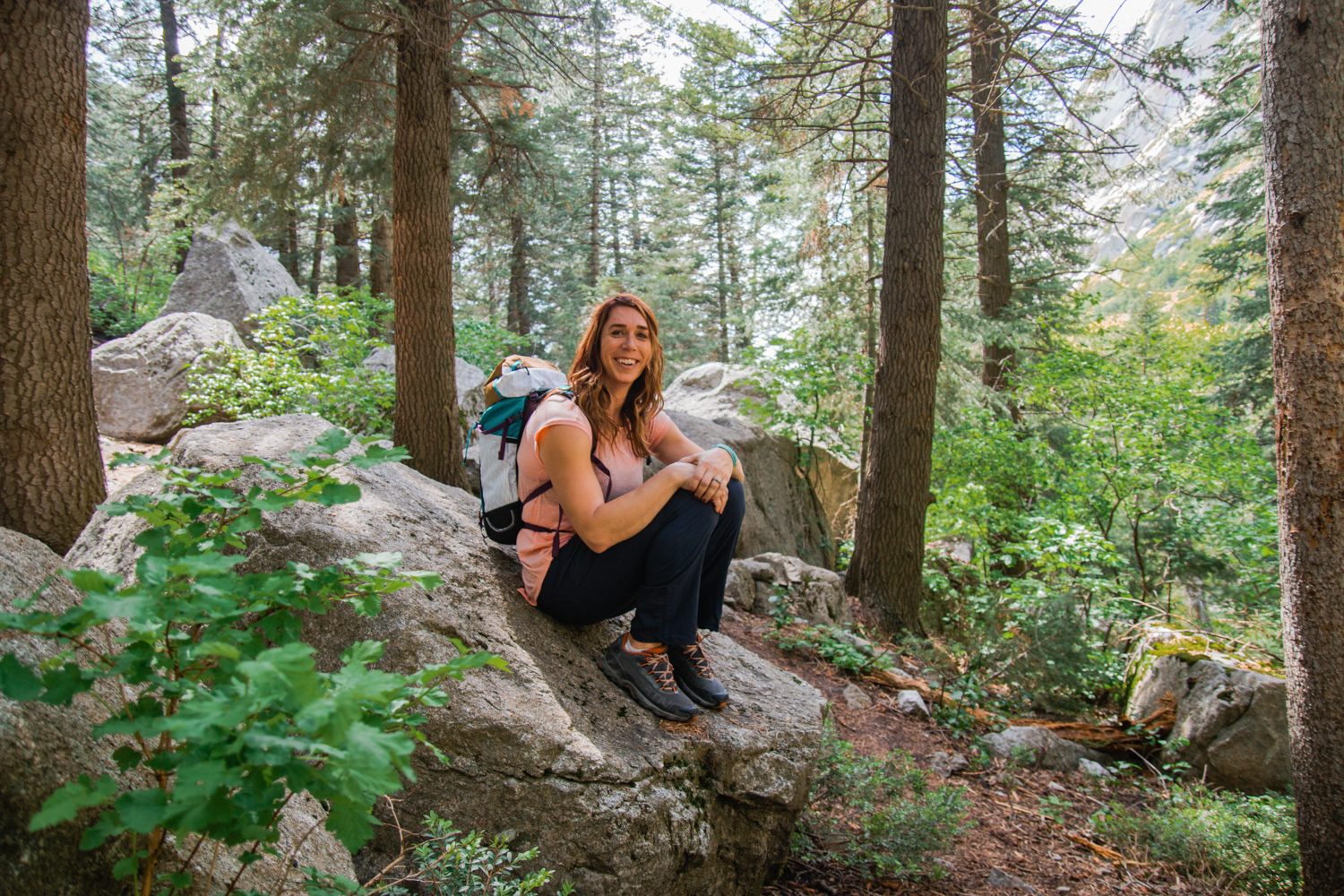
Nikki Smith; photo by Laura Hughes
We teamed up with Mountain Hardwear to produce this interview with Nikki Smith, a climber, photographer, writer, and cocktail maker that I’d admired from afar.
What struck me first about Nikki is the slow, soft, cadence of her voice. In my day-to-day life, I’ve noticed a quickening pace to conversations. We can be in a rush to jump onto the next point with little room for contemplative silence. Nikki gave me the gift of her time and an invitation to slow down a bit.
Nikki doesn’t just carve out space in conversations, she makes room for others in her work and through her considerate nature. Her creative work often comes down to connecting with people she cares about. As a trans woman, she is quick to recognize her own privileges and is always doing her best to uplift others who deserve to be seen, too.
Learn more about Nikki on the episode landing page ->
A Few Conservation Conversations
Teaching by Example: Low Waste Camper & Garden Ranger Cindy Villaseñor
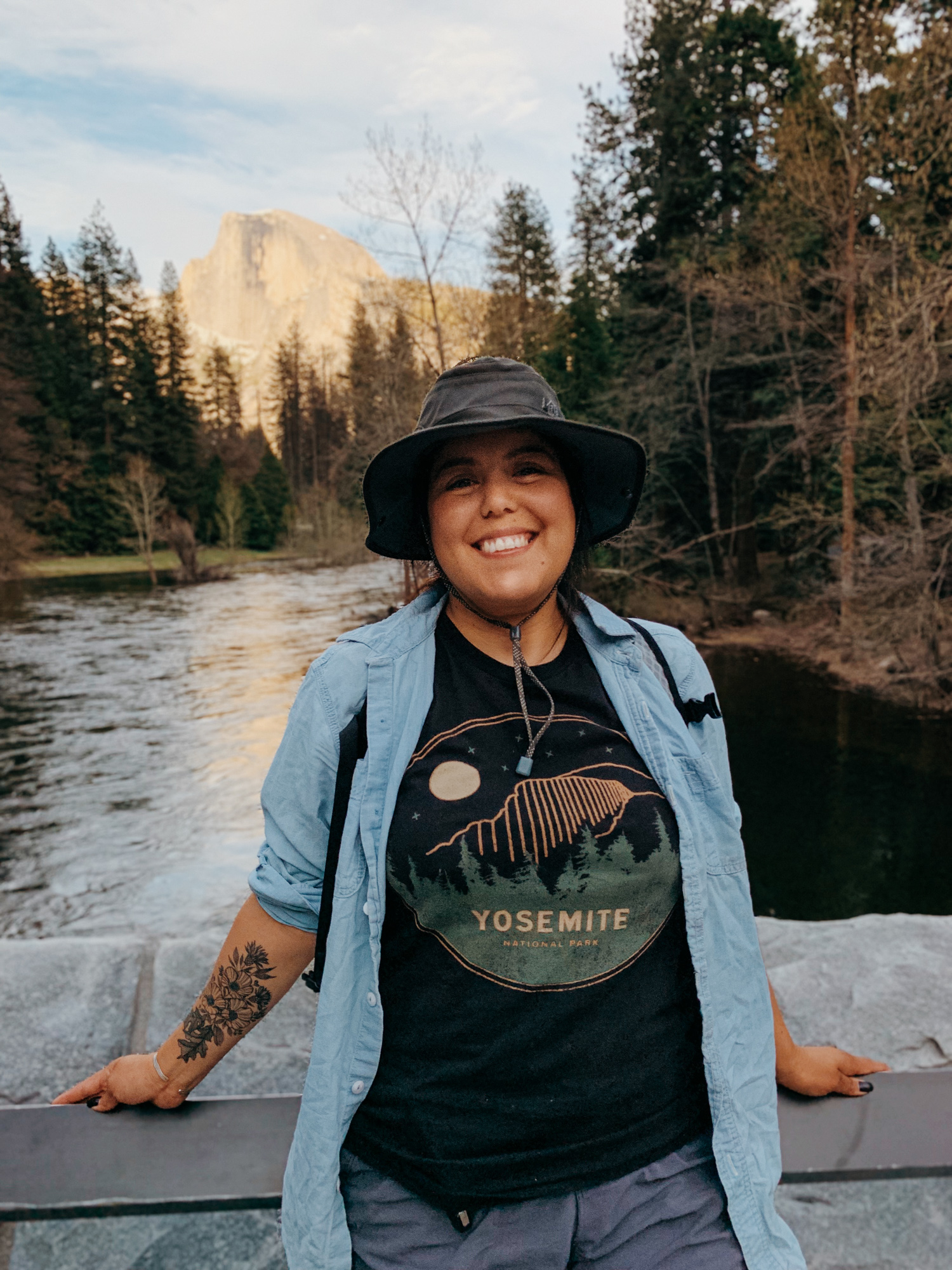
Cindy at one of her favorite places, Yosemite.
Cindy Villaseñor lives an intentional, low-waste lifestyle. An influential teacher inspired her to learn more about her impact on the environment. Since then, she’s been paying it forward: educating others about their personal footprint in a way that invites people in.
It’s been fun to follow Cindy since our conversation back in April. She’s been taking on more teaching opportunities. I got the opportunity to attend one of her classes at the Women on the Road campout. It was full of practical tips for low-waste camping and everyday sustainability.
We need more people like Cindy. Her generous spirit spreads light for the good of our home, our world.
Learn more about Cindy on the episode landing page ->
Reading a River: Downriver Author Heather Hansman
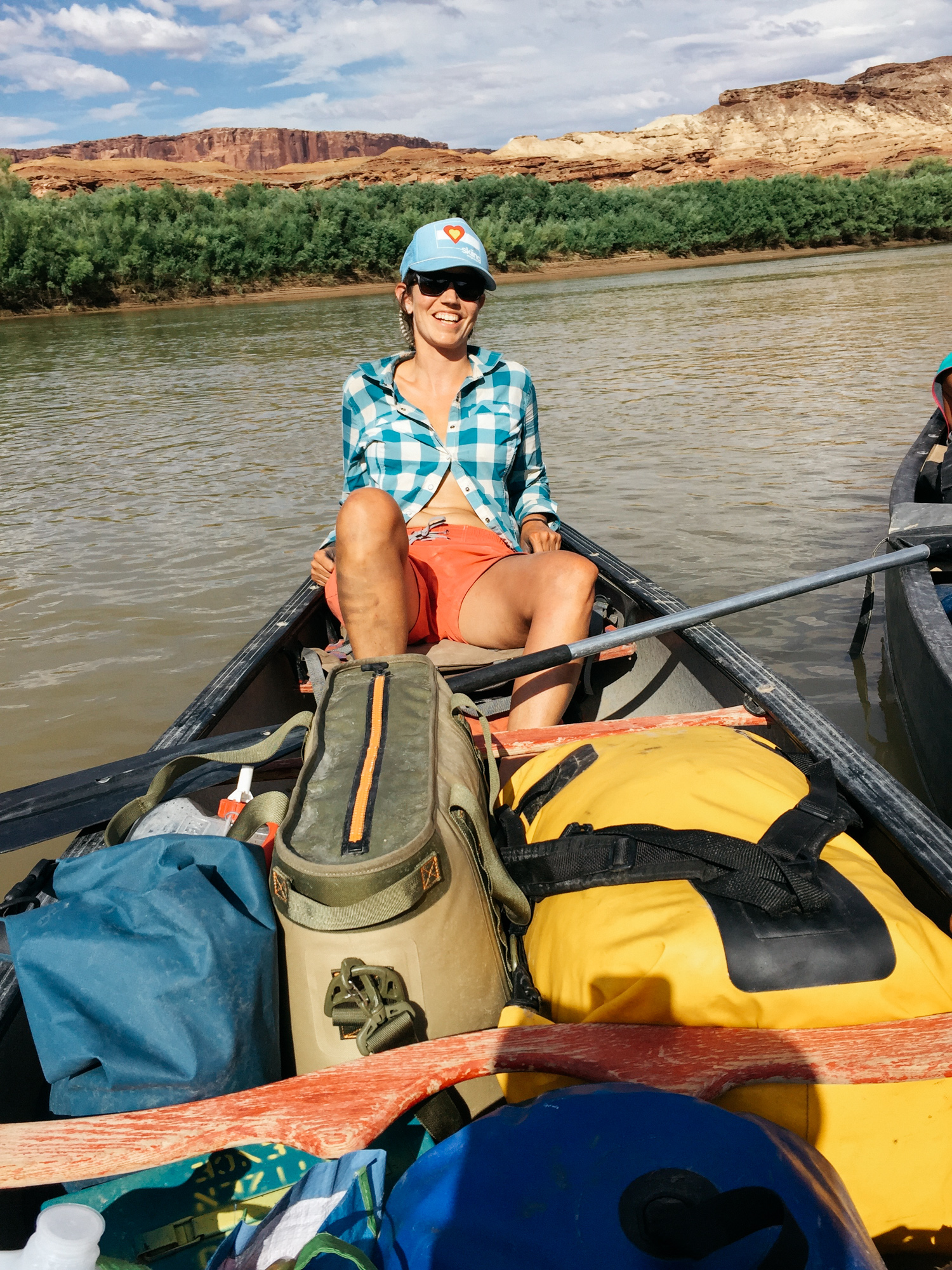
Heather on the water
Water in the west is a complicated issue. It’s not as simple as there not being enough to go around, there are multiple stakeholders: farmers, recreationists, people, and conservationists to name a few. These stakeholders are in an almost constant push and pull to secure water rights and control flow of water as it flows down the western United States.
Author Heather Hansman decided to get up close to the issue by packrafting the Green River. Along the way, she talked to stakeholders and hoped to gain a better understanding of the competing interests. As a former river guide, she also reconnected with her love for time on the water.
Heather’s book, Downriver, is both an educational resource on water conservatoin and an adventure memoir. The combination is a gentle reminder that when we’re out enjoying the natural world, there’s always an undercurrent of environmental factors at play.
Learn more about Heather and Downriver on the episode landing page ->
Butterflies, Bison, and the Border Wall: Conservationist Krista Schlyer
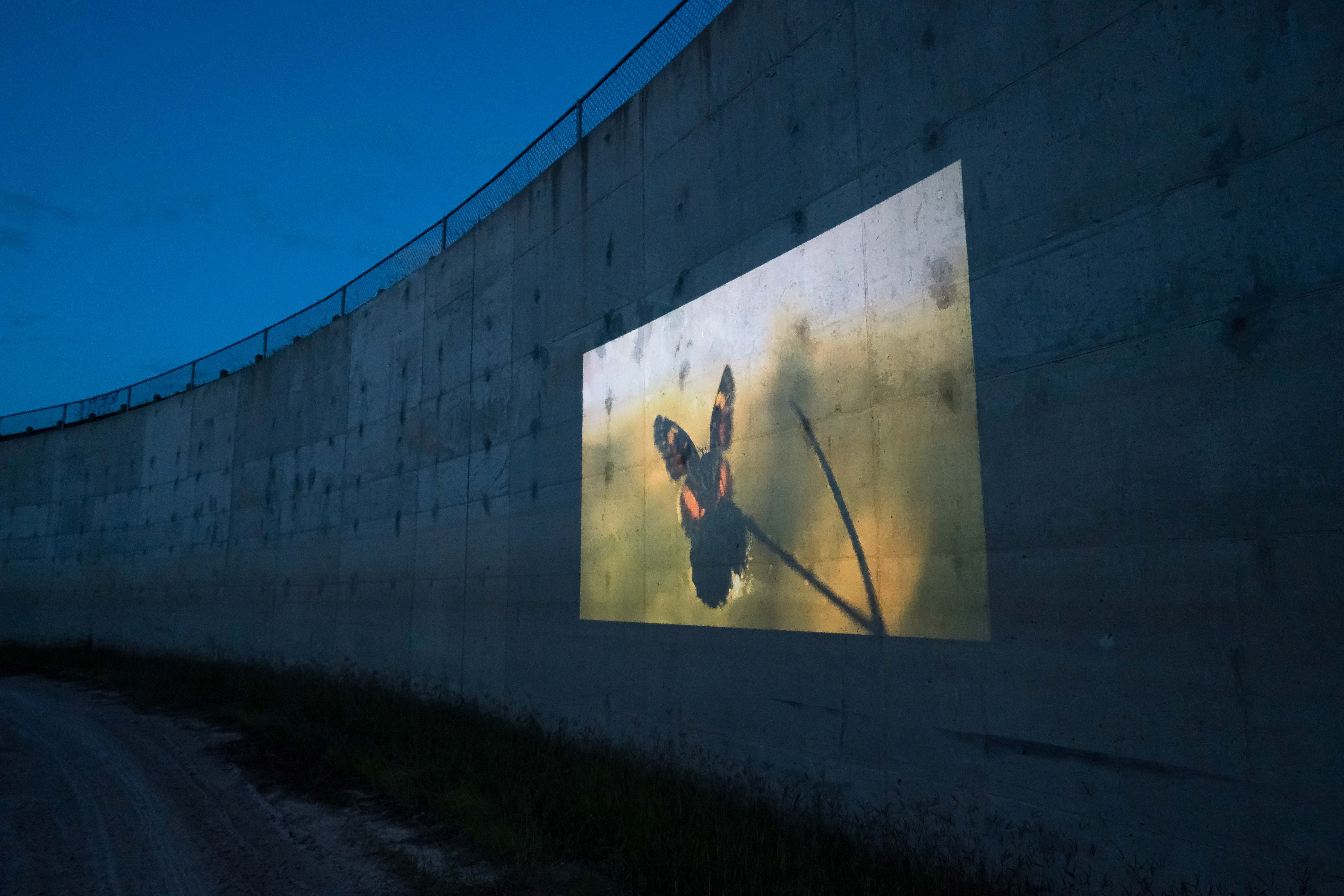
The fact that a border wall running along the southern border of the United States would have implications for human life and wildlife isn’t surprising when you think about it. But how often do you think about it?
Conservation photographer Krysta Schlyer is driven to showcase the biodiversity of the Mexico/US border to help protect their ecosystem. Her work for the last 15+ years has been devoted to telling those stories with beautiful photographs and a recent film, Ay Mariposa.
Learn more about Krista on the episode landing page ->
Subscribe to She Explores podcast via Apple Podcasts, Stitcher, and Google Play.
Want to join the conversation? Connect with other listeners in the She Explores Facebook Group.
Be the first to comment